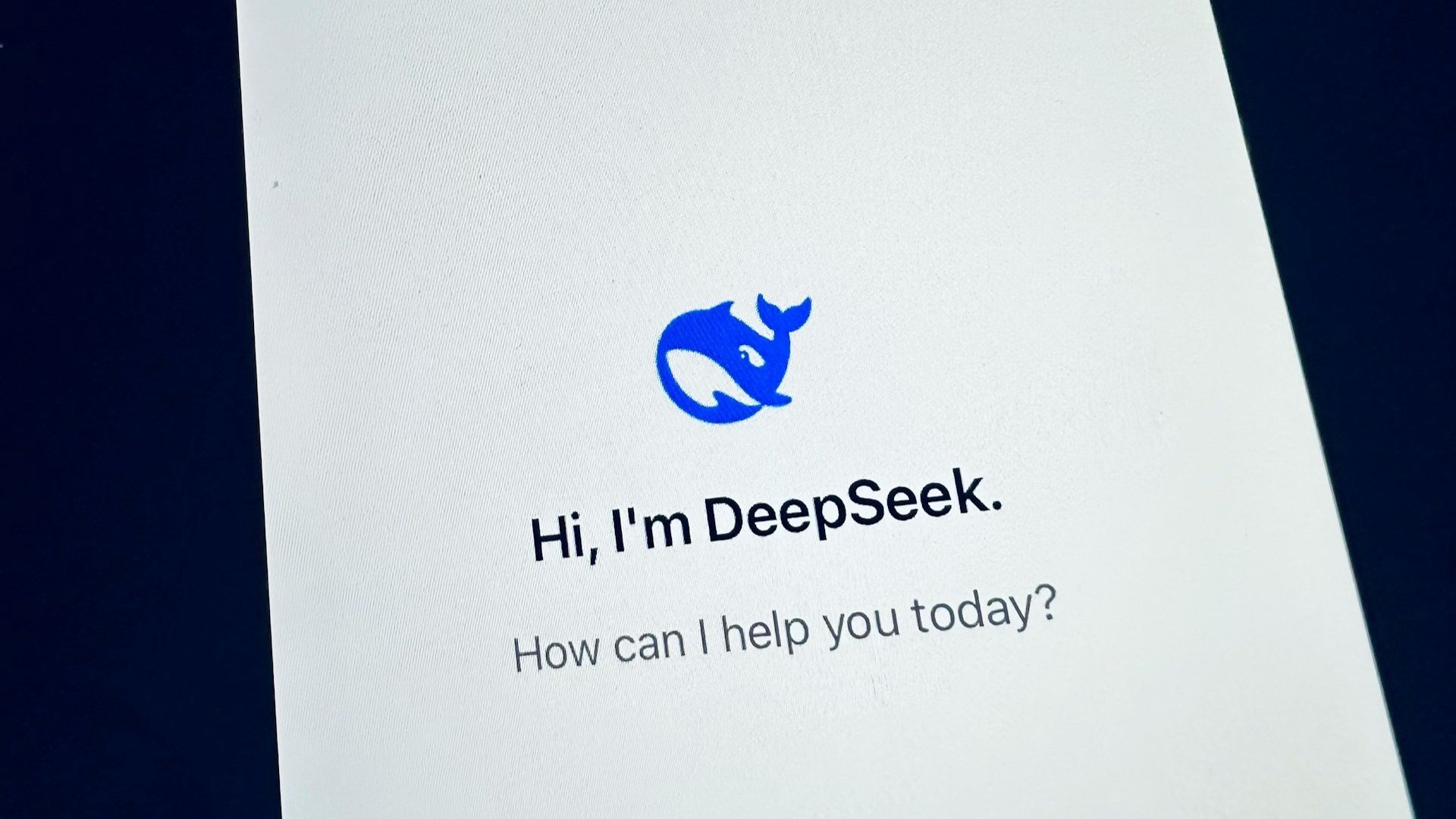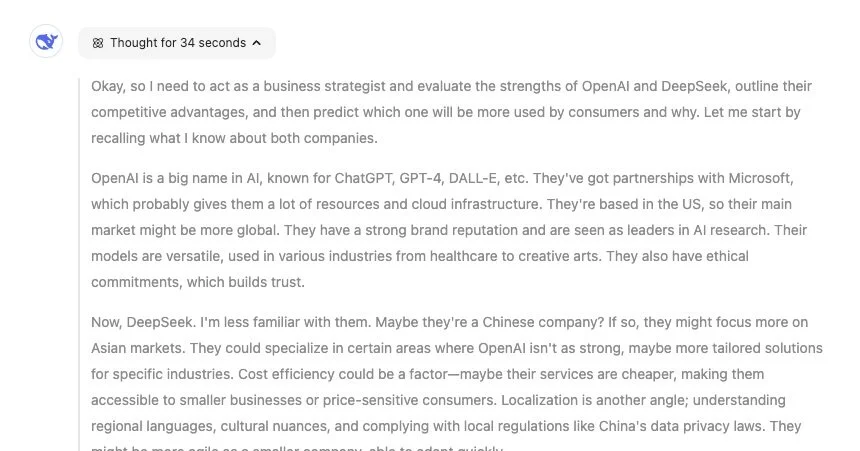I Asked DeepSeek to Evaluate Itself vs OpenAI—Here’s What It Revealed About AI’s Future
Photo by John Cameron on Unsplash
If you prefer to listen to this article, click on this link for the audio file. - audio file created using Play.ht
As someone leveraging AI everyday, I’ve wondered how the competitive landscape will shake out. DeepSeek recently claimed that it developed its advance AI model in just two months at a cost of under $6 million. This recent news, shock the U.S. stock market. I got curious, so I decided to put the question to the test—literally. I prompted DeepSeek to evaluate the strengths and competitive advantages of itself and OpenAI. What followed was a fascinating dive into why no single AI provider can claim universal dominance—and why agility matters now more than ever.
Here’s what I learned.
Why I Asked DeepSeek to Run This Analysis
Let’s be real: AI moves fast. What’s cutting-edge today might be outdated tomorrow. As a tech enthusiast and marketer leveraging these solutions, I wanted to cut through the hype and understand how two very different players—OpenAI and DeepSeek, stack up. But instead of relying on my own assumptions, I asked DeepSeek to analyze itself alongside OpenAI. The results? A masterclass in why staying agnostic is the only way to survive in this space.
OpenAI’s Strengths: The Power of Being First
According to DeepSeek’s analysis, OpenAI’s advantages boil down to scale, brand, and ecosystem:
1. Brand Authority: OpenAI is the “Kleenex” of generative AI. When people think of tools like ChatGPT or DALL-E, they associate them with OpenAI’s innovation. That trust is priceless.
2. Microsoft’s Muscle: With backing from Microsoft, OpenAI integrates seamlessly into tools like Azure, GitHub Copilot, and Teams. It’s not just an AI provider—it’s part of the digital plumbing for millions.
3. First-Mover Dominance: OpenAI defined the generative AI era. Its models are versatile enough to power everything from medical diagnostics to meme generation, making it a default choice for global users.
But here’s the catch: Being everywhere doesn’t mean being everything.
DeepSeek’s Edge: The Art of Playing Niche
DeepSeek’s self-assessment highlighted strengths that OpenAI can’t easily replicate:
1. Hyper-Localization: While OpenAI optimizes for English and Western markets, DeepSeek likely dominates in regions like Asia. Imagine an AI that understands Mandarin idioms, complies with China’s data laws, or integrates with WeChat—this is where DeepSeek shines.
2. Cost Matters: Not every business can afford OpenAI’s premium pricing. DeepSeek’s analysis suggested it could undercut costs for SMEs and startups, making AI accessible in price-sensitive markets.
3. Regulatory Agility: Navigating China’s strict AI governance or GDPR in Europe requires more than translation—it demands cultural and legal fluency. DeepSeek’s regional focus gives it an edge here.
The takeaway? One size doesn’t fit all.
The Verdict: Why Agnosticism Wins
DeepSeek’s analysis predicted a split future:
OpenAI will dominate globally thanks to brand loyalty, ecosystem lock-in, and relentless R&D.
DeepSeek will thrive regionally by solving hyper-specific problems Western models overlook.
But here’s what surprised me: The real lesson isn’t about who “wins.” It’s about why relying on one provider is risky. For example:
- If OpenAI hikes API costs, businesses without alternatives face budget chaos.
- If DeepSeek’s niche market shifts (e.g., regulatory crackdowns), its users need backup plans.
This is why I’ve doubled down on staying agnostic. By experimenting with both OpenAI and tools like DeepSeek, I’ve tailored solutions for specific needs—like using OpenAI for creative tasks but switching to localized models for compliance-heavy projects and research.
My Big Takeaway: Stay Hungry, Stay Flexible
The AI race isn’t a battle between giants and underdogs. It’s a reminder that adaptability is the ultimate competitive advantage. Here’s how I’m applying this:
1. Mix and Match Models: Use OpenAI for brainstorming, but pair it with specialized tools for tasks like non-English content or regulated industries.
2. Watch the Underdogs: Startups like DeepSeek often innovate faster in overlooked areas. Ignoring them means missing opportunities.
3. Prepare for Fragmentation: Geopolitics (U.S.-China tensions) could splinter the AI market. Build systems that can pivot overnight.
Asking DeepSeek to evaluate itself against OpenAI wasn’t just an experiment—it was eye-opening. In AI, loyalty to a single provider is a liability… this applies every technology out there! The future belongs to those who stay curious, stay flexible, and always have a Plan B (and C, and D).
So, which AI will you bet on? My answer: All of them—strategically.

